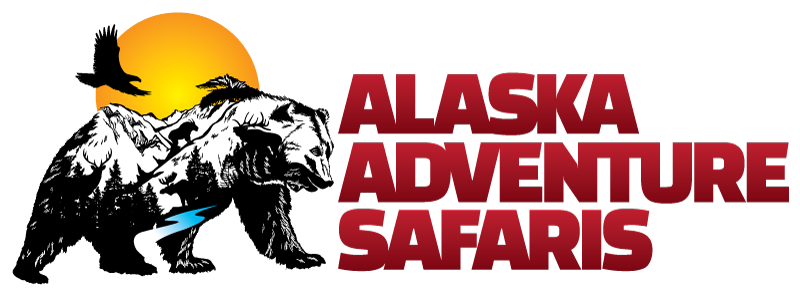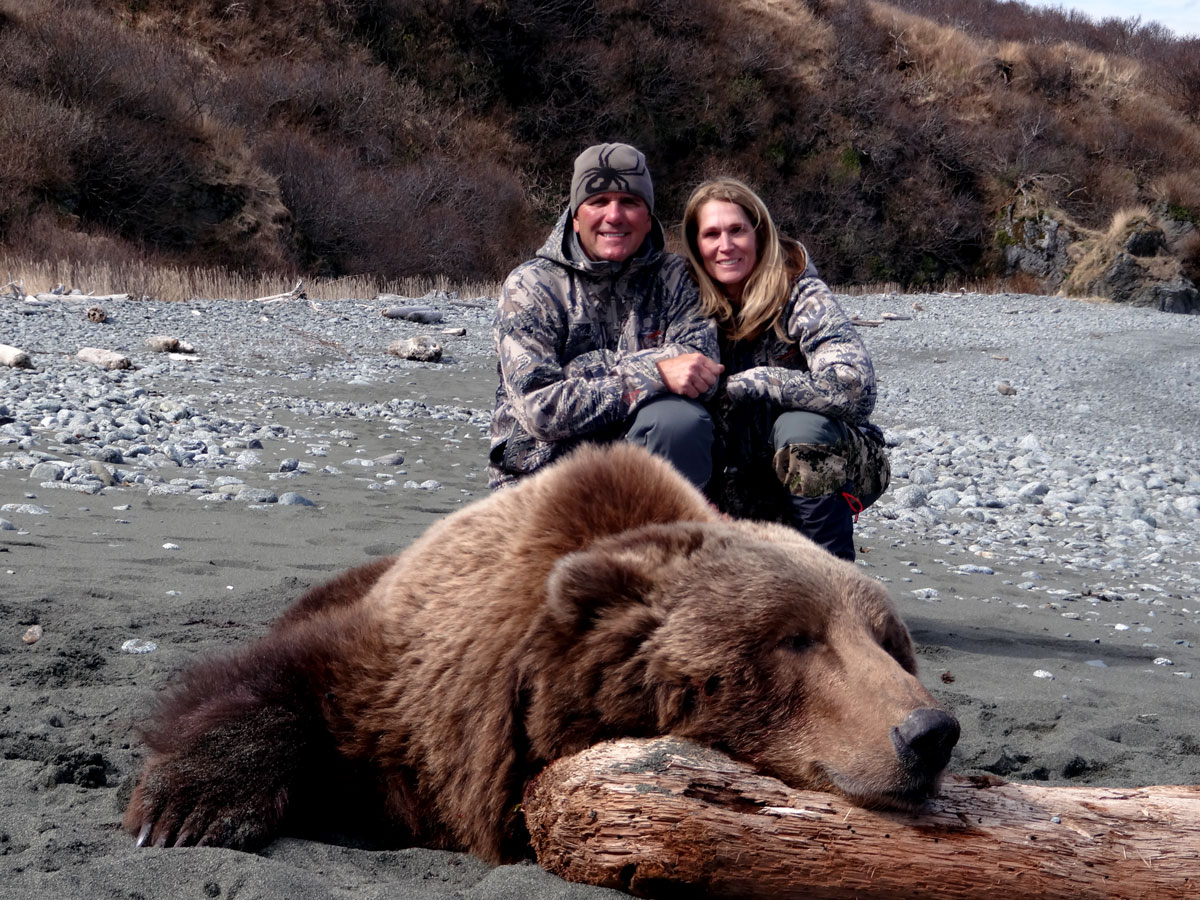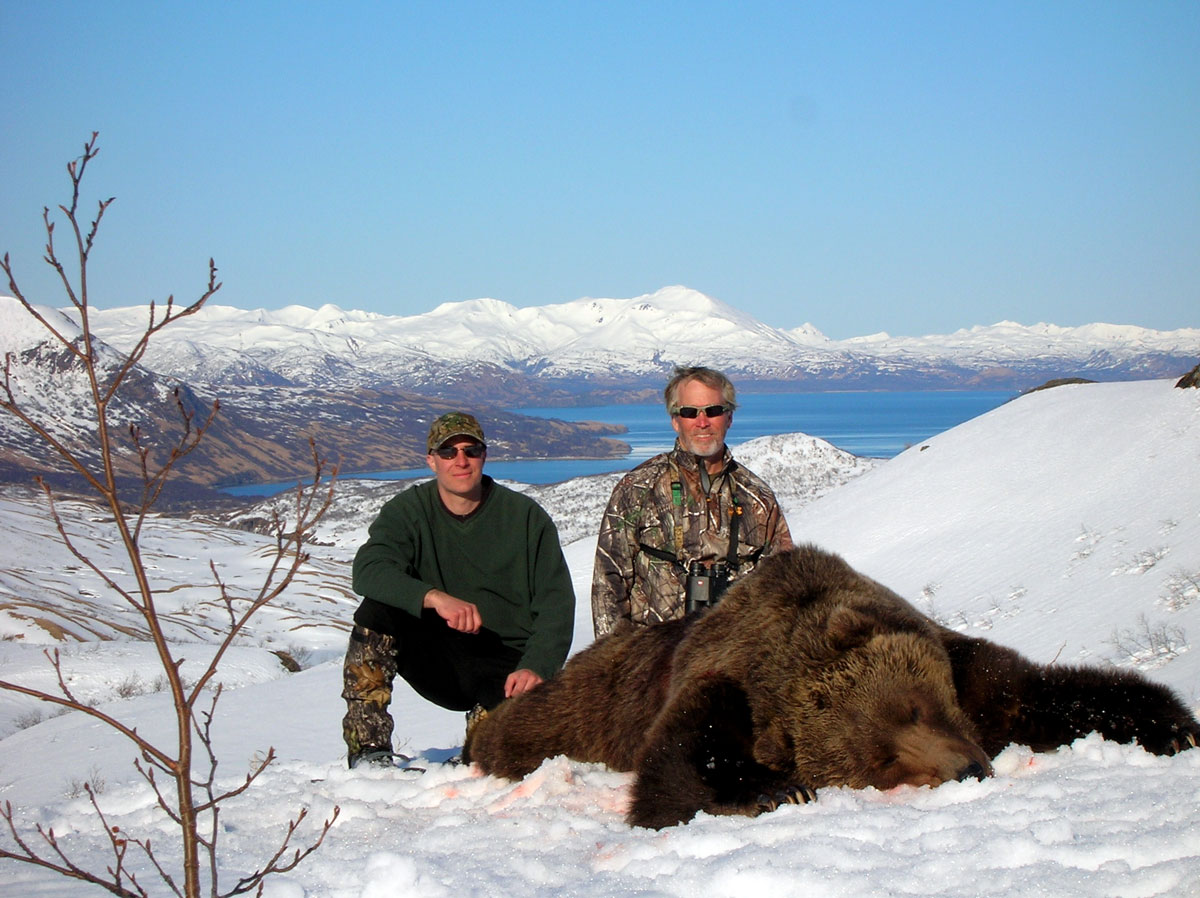Trophy Kodiak Brown Bears –Fair Chase Hunting
Kodiak Brown Bear Hunting…what more needs to be said. This is the best place in the world to shoot a trophy class Brown Bear for several reasons. The #1 Boone and Crockett record bear came from Kodiak Island. The number of trophy bears taken in the past 5 years with skulls over 28” was higher than any 5-year period since 1960, according to the Alaska Department of Fish and Game. It is estimated that there is one bear per square mile on Kodiak. The Kodiak Bear population is stable, healthy, and productive. We hunt hard and smart in order to maximize your opportunity at a trophy bear, and it pays off.
Premier Draw-Only Hunt Areas
Hunts take place on Kodiak every spring and every fall and I am registered in three guide use areas! These areas are premiere draw only hunt locations that hold some very large bears. Each area I hunt offers between 3 and 5 permits per season total. This means that there is very low hunting pressure and they hold some enormous bears.
Your Adventure
My normal hunts are 10 days in length, but I specialize in custom hunts that can be tailored to your needs and availability so this duration can be modified. I offer 3 different types of hunts 1) Comfortable lodge-based hunt where we stay in a beautiful lodge and get transported to the hunting area by boat each day. 2) Boat based hunt where we spend the nights on a safe, comfortable vessel. Each day we are transported to the hunting area to begin hunting. 3) Adventurous backpack style hunt. For those of you that would like to do more hiking and camping out in a tent, this is the hunt for you. We will see places of the island that few others do.
Physically Challenged Hunters
I would not exclude physically challenged hunters from enjoying this opportunity. My lodge-based and boat-based hunts are perfect for those that are not as mobile as others. We utilize a custom landing craft boat that allows easy access on and off and even allows good access for wheelchairs. I will have adequate staff to support these hunts and generally have at least 2 guides on each hunt. We will bring extra gear such as hiking sticks and a small chair if you need to stop and take a break. Safety is always our #1 concern.
How I Hunt
As a guide I truly enjoy the hunt, just as if I was hunting for myself. It is a passion of mine and I am resolved to provide a high quality, productive hunt, just as if I would if it were my own hunt. For this reason, I have chosen to guide for Brown Bears in the premium Kodiak Draw areas where there is low hunting pressure and a good population of trophy bears. For my backpack style hunts, I know where the good camping and glassing spots are. We will set up camp very close to our glassing spots so that we are not hiking to and from camp each morning and evening. This maximizes our hunting hours per day since we are not hiking back to camp at the most productive times of the day (morning and evening), we are already there. It is generally not a good idea to hike about looking for bears. This will spread your scent and spook bears out of the area or make them nocturnal. A smart old bear will avoid humans and human scent is a dead giveaway. You can cover a lot more ground with a high-quality pair of binoculars and a spotting scope. Bears are smart creatures and you have to hunt them carefully in order to be successful.
Glassing hillsides and valleys with high quality optics is a very productive way to score on a trophy bear. Our goal is to shoot mature male bears. Once the bear is spotted, we will evaluate it see if it is a mature boar, estimate the size, and evaluate the hide condition. We are experienced using several techniques to determine the sex of the bear and estimate the size. Some of the things I look at when determining the size of the bear are as listed below. They are all to be taken into consideration when judging a bear. Experience is the best tool, and this is one of the reasons to have a good guide to put all of these pieces of the puzzle together.
Things to look for on a Trophy Bear
- Relative size of the ears to the head: Ears that appear small and have a large distance between them or look low on the sides of the head is an indication of a mature bear.
- The size of the head in reference to the body: If the size of the head looks small in reference to the body it is an indication of a large bear. I have my own formula I use to estimate the size of the bear based on relative size of the body and head.
- Long ivory claws: I have spoken with the wildlife biologist on Kodiak and he indicated that the claws of a bear usually turn white after 11 years of age.
- Mannerisms: A large bear walks and sways in a ponderous way, almost like each step is painful. Large bears are usually not playing around and frolicking.
- Male features: A male bear will have a square block looking head and massive shoulders. The best way to describe this is to look at a male dog vs. a female dog. The female dogs head will usually be narrower and tapered while the males will be blocky looking. The male dog will also have more muscle on the shoulders, as does a male bear.
- Neck: A large male bear will have a long thick neck.
- Fur: A male bear will generally have a darker smooth looking coat. A young bear or a female will most often have a fluffy light colored coat. Cubs will sometimes have a light color “collar” on their coat that easily identifies then as a young bear.
- Scarring: Many mature males will have scarring on or around the snout (although I have seen females with some scarring too)
- Legs: A large bear will have long legs.
- Face: An older bear will have a more prominent dished face.
- Cubs: If a bear has cubs everybody gets to spend some time watching and enjoying mama.
- In the rut: It is not uncommon in the spring to see a boar following a sow. He is usually not far behind, and he moves when she moves.
- Track size: The size of a bear can be estimated by taking the width of the front paw in inches and adding 1 to get the square of the hide in feet. Example-a 7” wide front track will usually be about an 8’ square bear. You can also measure from the base of the toes to the end of the pad on a rear paw, and this number in inches is about what the bear will square (do not add the inch as you do on the front paw method)
- Hide quality: It is important to look for “rub” marks on the hide. They will appear as light spots from the size of a baseball to encompassing most of the bear. This happens when the long guard hairs are not present reveling the undercoat or sometimes down to the skin. A rubbed bear does not usually make a very appealing mount.
Squaring the Bear
I have heard a lot of ways that people describe a 10’ bear. Does this mean he is 10’ tall standing on hind legs? No. The generally accepted way of squaring a bear is as follows. Once the hide has been removed from the bear, lay it fur side down on a flat surface. Pull one front paw until the other front paw moves to remove the wrinkles from it and then measure from front claw tip to front claw tip. Then pull on the snout until the tail moves to remove wrinkles from the hide. Measure from the snout tip to the tip of the flesh on the tail. Add those two numbers together and divide by 2. This is the square of the bear.
Consistency is the key and not everybody measures the same. For example, some people split the hide up to the bear’s neck. This will increase the size of the squared hide. I stop my cuts at the arm pits for taxidermy purposes. If a bear is measured after it is fleshed instead of before, I have seen it grow by almost 6”. Measuring the bear to the end of the fur on the tail instead of the flesh will give you an inch or two above what it should be. If a bear hide is held in the air while two guides are pulling on each paw to remove the wrinkles…you get the idea.
Skull Size
Boone and Crocket and Safari Club use the skull size as a measure of the trophy. Measure the width and add it to the length to get the skull size after the appropriate drying period. It is not possible to estimate the size of the skull in the field with any accuracy, but myself and my guides know it when we see a trophy bear that is likely to be over 28”.
Gear for the Hunt
I have an extensive list of gear that I recommend for the hunt depending on the season. It has been fine tuned to offer you equipment that will keep you warm, dry, and comfortable. It has gone through years of iterations and I have weeded out thing that do not work. You will benefit from every wet, cold, uncomfortable day and night I have spent in the field to get to this point.
The Shot
I recommend that you become intimately familiar with your rifle and bullets. When it comes down to the moment of truth, we owe it to the bear to make a quick and humane kill. I fully expect you to know how your rifle shoots and the ballistics of your cartridge based on practice. It is important to study the anatomy of a bear and know where the heart-lung area is, and I will describe this in detail as well during our pre-hunt safety meeting. I always recommend shooting for this area since it will bring a quick end and it is the largest vital target. Depending on the conditions I like to be in the 100-yard range in order to ensure a quick clean kill. We will shoot your rifle before the hunt to make sure it is sighted in. I recommend a 300 magnum or larger with at least 180 grain bullets, as long as you can shoot it accurately. Shot placement is the most important, followed by bullet construction, then by caliber. I only recommend using a premium, well-constructed bullet – Barnes TSX, Swift A-Frame, Trophy Bonded Bear Claw, Nosler Partition – in that order.
After the Shot
Once you have your animal on the ground, we will position it to show it the respect it deserves, then take lots of pictures. Skinning a large brown bear takes a few hours for a guide. We have consulted and worked with taxidermists to know the best method of skinning to ensure the quality of your trophy. Trophy care continues in the field and until we deliver the hide to a taxidermist to be mounted or expedited to your taxidermist.



